‘The Reason Why We’re Here’
When the organization you lead is called Big Thought, you’re keenly aware of the implications — people expect big ideas, big goals, and big, well, thoughts.
But big thoughts about what?
“The reason why we’re here is because we believe in creating a world where all youth in marginalized communities are equipped to imagine and create their best lives and worlds, and that requires us to shift systems and, quite frankly, shift power,” Big Thought executive director Byron Sanders said.
In short, through the power of art, social and emotional learning, and STEM (science, technology, engineering, and mathematics) applications, Big Thought aims to give children the tools to succeed.
“We believe in creating a world where all youth in marginalized communities are equipped to imagine and create their best lives and worlds.” -Byron Sanders
“Youths need to be elevated as co-designers of that world,” he said. “And that happens if we equip them to be creators — and creators are people who have been able to build their creative muscles, who have been able to build social and emotional well-being based on their own personal health, and also their emotional intelligence.
“So we work on three things — building the creative muscle, building social and emotional well-being, and helping them recognize the power of their own voice.”
The organization utilizes in-school, out-of-school, and community partnership programs, with the idea that making imagination part of everyday learning can help achieve that.
By making sure students get high-quality learning experiences (often offered at low-cost or free) that promote creativity as well as social and emotional learning, Big Thought starts this three-pronged approach early.
And its Creative Solutions program, which uses performing and visual arts to re-ignite the imaginations of juvenile offenders also helping them develop skills that will assist them in being career and college ready, has one of the lowest recidivism rates in the state.
The latter, Sanders said, is one of the most successful and longest-running programs the organization offers, with an average recidivism rate of 9 percent.
“This last year’s data that we’ve got back shows that that summer’s recidivism rate was only 4 percent,” he said. “Our 10-year average is now 9 percent. The typical good program will get you anywhere between 30 and 40 percent recidivism rate. That’s a good program.”
But the organization isn’t just content to rest on its already successful programs. The organization announced in February that it is launching Big Thought Institute, a new division aimed at providing professional development, assistance with curriculum design, technical assistance, and other help to various organizations.
Led by senior director Greg Macpherson, the institute will base its consultation services on its own best practices, honed from years of experience to implement programs based on social and emotional learning, experiential learning, and partnerships with the community.
Our full conversation with Byron Sanders follows. It has been edited for clarity and length.
PN: For those that aren’t familiar with what Big Thought does, let’s talk about some of the programs your organization offers.
Sanders: “First, I’ll just start at kind of the high level of our theory of action. The reason why we’re here is because we believe in creating a world where all youth in marginalized communities are equipped to imagine and create their best lives and worlds, and that requires us to shift systems and, quite frankly, shift power.
Youth need to be elevated as co-designers in that world, and that happens if we equip them to be creators. And creators are people who, one, have been able to build their creative muscle, and two, have been able to build social and emotional well-being based on their own personal health and also their emotional intelligence.
And the third thing is they recognize the power of their own voice. So our work hits on those three things – building the creative muscle; building social, emotional well-being instincts; and building youth voice.”
PN: How does Dallas City of Learning come in to play with that goal of bringing that imagination and emotional and social well-being to marginalized youth?
Sanders: “We do that in a wide range of ways – one of the biggest ones is Dallas City of Learning, where we – Big Thought – are the facilitator of a broad ecosystem that covers the entire city. The whole goal that we started off with – and we did this in partnership with Dr. Hinojosa and with Mayor Mike Rawlings, the whole notion was, can we build an ecosystem where it no matter where a kid lives and what their zip code is, there is a high-quality learning experience for them to do outside of school in the summer?
And what we were able to show in this last report out was that we now have three years of data as analyzed by SMU that shows you can correlate hours achieved in Dallas City of Learning with increases in GPA, with increases in STAAR scores from elementary through high school, with increases in attendance.
It’s working. And the total touchpoint for youth in this past year was over 60,000 students throughout the entire Dallas area. This is huge. We have never had access to an ecosystem that was able to capture so many varied experiences and be able to produce a literal heat map of concentrations of experiences, and then also where there are gaps so that in the upcoming summers we’re going to be able to be even more strategic about how we do that.
The other cool part is what we’ve been able to do is map these experiences by sectors. So are they STEM-based? Are the arts and culturally based? Are they leadership based? There’s a ton of different things. So not only do we know where there are programs, we know what kinds of programs are in and the system is getting smarter and smarter, we’re going to be able to tell which ones are most effective in driving student achievement, which ones are most effective and drive social-emotional development, etc.
So it’s tremendous. We never had access to this data. What we really think we’ve done is brought structure to what has been considered an unstructured learning world. Anything that happens after school – an individual program might know what they’re doing. But what do we collectively doing altogether? We now have that data and it’s unprecedented.“
PN: There seems to be a lot of discussion about social and emotional learning, too. What kind of focus are you all putting on that?
Sanders: “One of the research projects that we’re in the middle of – that’s being funded by the Wallace Foundation – we’re working to embed social and emotional learning in the school day and the after school. And so it’s Big Thought that’s the fiscal agent and the anchor for this initiative working with Dallas ISD as our key partner – some of the other partners in it are Dallas Afterschool, and the City of Dallas Parks and Rec.
And what we’re seeing is that we are now in a place where we’re starting to build out literal practice for embedding social and emotional learning – a continuous thread of social-emotional learning – from 7:30 when the kids might get there all the way to six o’clock, when their mom and dad might be getting off of work to be able to come and pick them up. And it’s been amazing – it truly has – to see the gains that we’ve already seen.
So the reports are going to be coming out here soon – eventually, but we can tell you just from early data, we’re seeing a positive effect on not just the youth in the buildings, but the adults in the building. We’re starting to see even a difference in teacher absences at the campuses that are receiving these interventions. The social-emotional learning foundation allows so many other things that we want to see happen in the school environment. It’s beautiful.
Our work is in the technical assistance we provide the social-emotional learning specialist and we work in partnership with Dallas ISD in order to build this out. They have a phenomenal department there. And this is another one of those partnerships that that’s helping drive shift things change in education.”
PN: So let’s touch on one of the other programs Big Thought has that is also producing some impressive results – your juvenile offender program, because the recidivism rate for that program is pretty impressive.
Sanders: “It’s one of the most, I would say, astounding things that we do it into the wide range of things and we do. I’m so proud of our teens and what they’re able to accomplish in this work. So, you know, we’re entering our 26th year – two six – of partnership with Dallas County systems, and this is our third director of Dallas County systems that we’re working with in the juvenile department. And it’s just been tremendous support what our team has been able to accomplish.
So Creative Solutions started off as a program where we would go in through the detention facility – and we still do that work there – but that’s just where it started. What then rolled out was, you know, the same things that we saw were being effective in the detention facility – can we continue something like that for the youth when they get out on probation? So the Creative Solutions summer was born. And that’s a seven-week camp where we have it on SMU’s campus. The youth don’t live on campus, but they come every day. And the whole concept is an “arts as workforce,” trauma-informed program.
What it is, is the young people on probation, age ranges 10 to going on 18, come to us. And they end up choosing one of two tracks to work in, either the performing arts or the visual arts. Performing arts includes music, dance, acting, hip hop, set design as well. It’s there because they have to produce a musical, produce a play.
The visual arts is multiple disciplines – ceramic, charcoal, acrylic, sculpting – it’s everything, right? Glasswork even. And so does they are working artists because they actually get paid a stipend.
But all of that is essentially the vehicle through which they learned really powerful social and emotional skills. What they do is they one, have to find their own voice, and really master and own their story. And all that comes with it is helping them work through trauma and resolve how you’re more than the worst thing you’ve ever done or the worst thing that’s ever happened to you.
And what happens in the delivery of this model with a ton of intentionality that brings in best practices based on research from developmental relationships, cognitive behavioral therapy, and restorative practices. When you pull all of that together, you end up with what we have, which is a problem with the lowest recidivism rate in the county.
This last year’s data that we’ve got back shows that that summer’s recidivism rate was only 4%. Our 10-year average is now 9%. The typical good program will get you anywhere between 30 and 40% recidivism rate. That’s a good program. No program at all gets you about 60%. The fact that we’re able to achieve single digits is tremendous.”
PN: Do you think that some of that also has to do with the fact that you have kids, that may not have ever entertained the idea of going to college or anything like that, but then they spend an entire summer on a college campus?
Sanders: You know, without a doubt, it’s part of the design. Absolutely. One of the most important parts of this is getting to see yourself and thinking about yourself differently. It’s not 100 percent, but I would say that the vast majority of youths who come to us have explained some degree of trauma and there’s an identity issue with understanding their value just by being – like you are alive, therefore, you are infinitely valued and you have the story of power – you have a story of strength. You have a story. Your story is a story of you as a beautiful person.
So getting that being on a college campus adds to that belief of belonging and understanding that you belong in spaces that you probably have thought of as off-limits.”

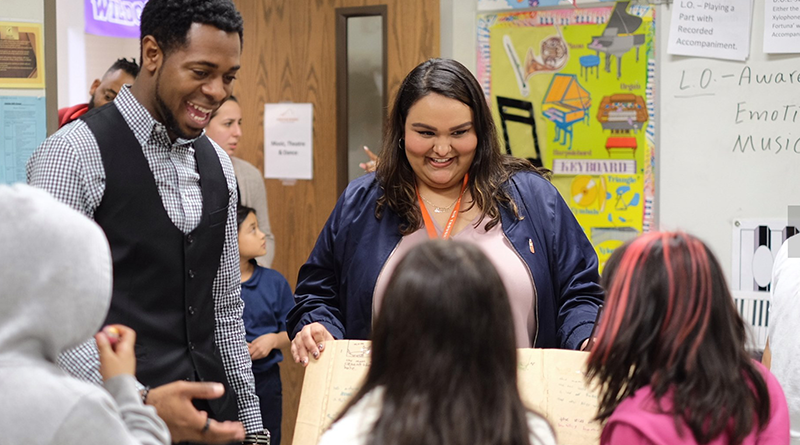
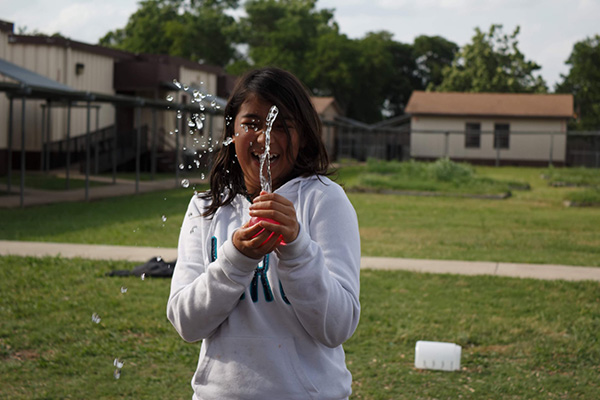
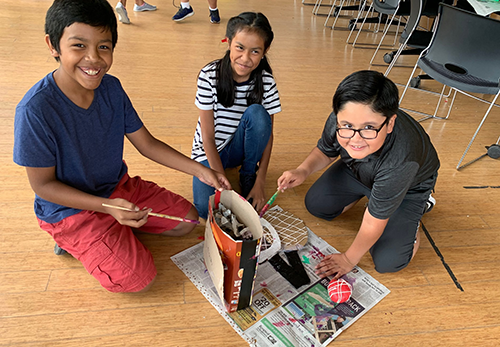






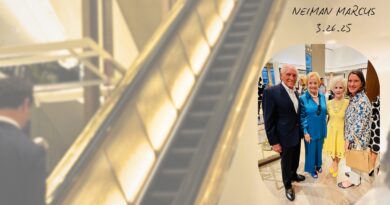
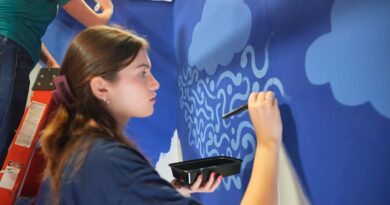
Pingback:Dallas ISD To Offer Childcare for Essential Workers at Two Sites | People Newspapers